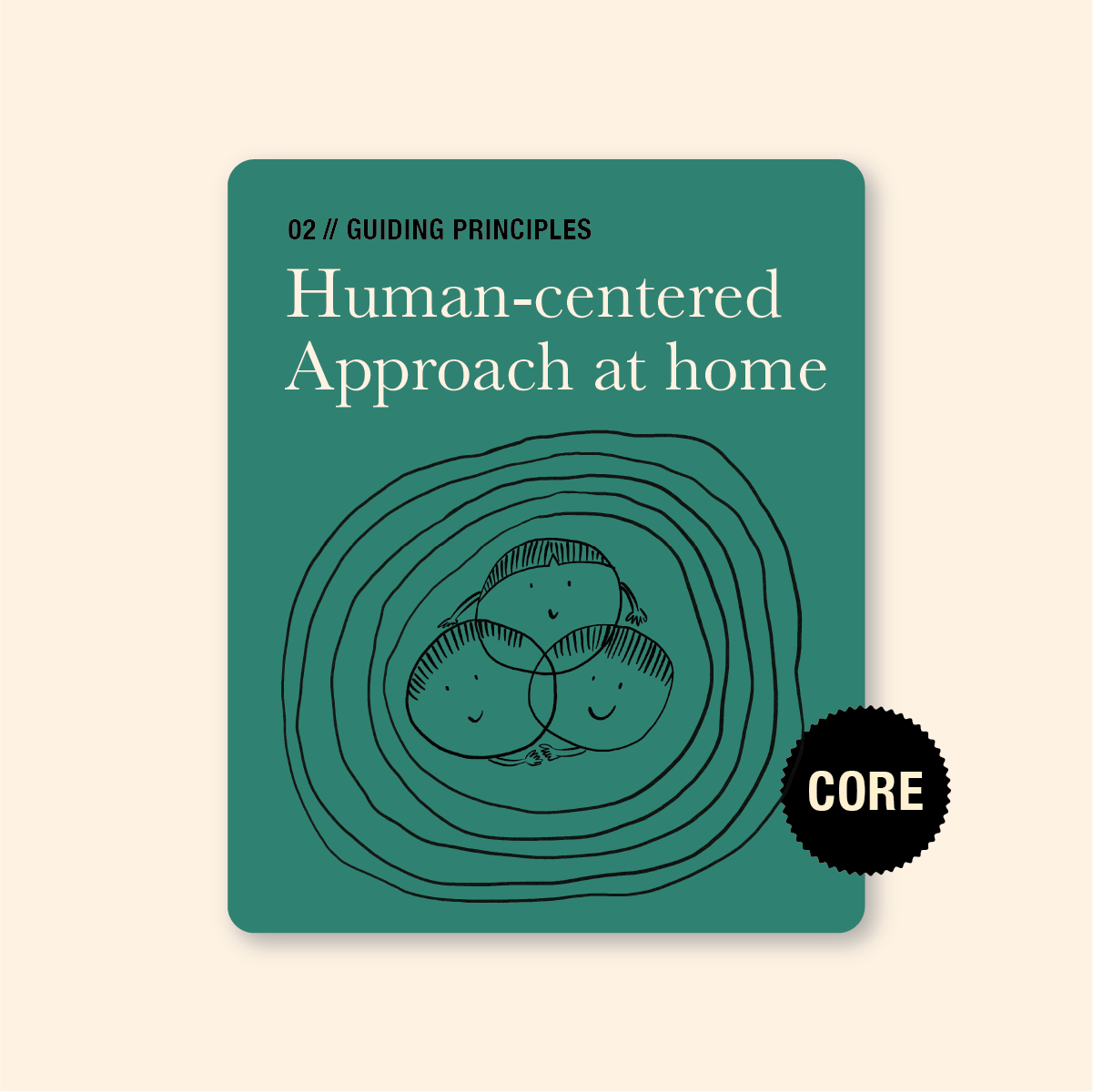Principles for a Human-Centered Approach at Home
Practical guide to help families design their culture and solve real life challenges with empathy, clarity and collaboration.
Businesses thrive when they put people at the center. We call it customer-centricity, employee engagement, or collaborative innovation. All of these stem from a human-centered approach, adapted to fit the purpose.
Families are no different. When we apply the same principles at home, we shift from daily battles to genuine collaboration. We also move away from trying to ‘fix’ people, to focus on designing environments that influence people’s behaviour.
These principles are drawn from the way designers work. The approach is well known in businesses and communities, but less often applied at home. They are also closely related to the principles that guide much of our experiences with brands. If you look closely at the products and services you use, you’ll see how these shape both the solution and the design journey.
This is why bringing human-centered principles into family life matter
s today . They help us notice, reflect and practice putting humans at the center as we navigate an increasingly complex world.
Foundational Principles
Focus On The People, Not The Problems.
When challenges come up, pause before trying to fix them. Direct our focus to the people involved, including ourselves. Consider what they are experiencing, their needs, and other contributing factors, then work towards balancing those needs across the family system.Design With The People, Not Just For Them.
Involve the people will be affected by a decision. When children help shape solutions that directly impact them, they feel a sense of ownership and are more likely to follow through. Co-creating also builds mutual understanding and connection.Solve for the Right Problem
It’s natural for us to jump to quick fixes like, more rules, less screen time, or stricter consequences. But we’re often treating symptoms instead of the real issue. When a child acts out, it might look like defiance, but more often than not, it’s a lack of skill or a need for connection. Solving for the right problem requires us to pause, observe, ask better questions before reacting. At home, it saves us focus our energy where it really matters.
See the System, How Things Connect
Every family is a system. Behaviours, routines, emotions are interconnected. A sibling fight might not just be about jealousy, but could also be linked to lack of sleep, boredom, or a need for connection. Systems thinking helps us see how parts influence one another. When we step back and look at the bigger picture, we notice that small changes in one part of the system can improve the whole.
Working Principles
Break It Down
When family life feels overwhelming, do not try to solve everything at once. Break big challenges into smaller, manageable steps and organise them so you can see the connections. Often, this that there are fewer problems than you thought, and that solving one or two root issues can make the rest easier. This eases pressure, reduce anxiety and builds confidence.Design Through Stories
Stories shape how people think, feel and act. At home, they help us understand behaviours, explain values, and build connection. Listening to stories, sharing and shaping them together is how we create a stronger culture and bond.Focus On What We Can Control
We cannot control other people, or entire systems. What we can control are our own thoughts, emotions, behaviours, and the environment we create. This is where small shifts can ripple outward.Make Ideas Tangible
Experiment and try things early, test a new routine for a week, change how you manage screen time, or change the way we respond to certain situations. When we turn talk into action, we give everyone a chance to respond, co-create, improve or even kill it if it doesn’t work.Embrace Iteration
Family life is always changing. Keep making small improvements instead of staying fixated with the one big solution. Small adjustments practiced together becomes a natural and easy way to strengthen your culture.
This is a work-in-progress, an evolving list that we’ll grow and refine as new insights emerge. We will also dive deeper into each principle, showing how come to life at home with stories, and practical tools.



